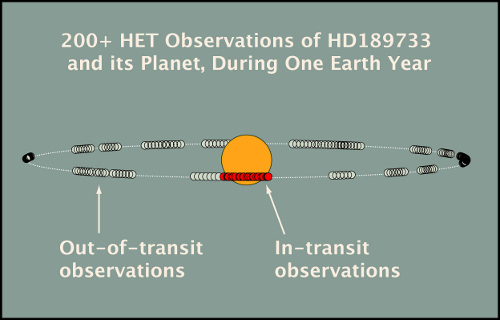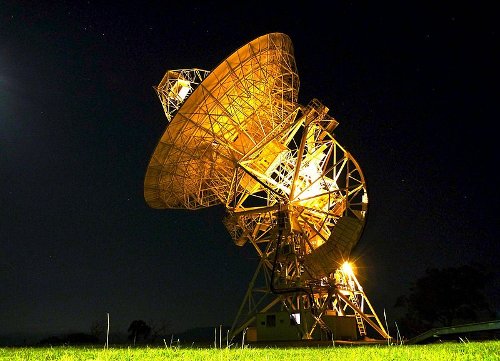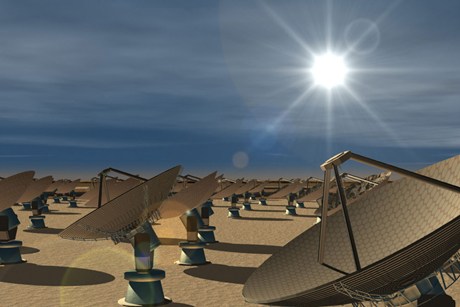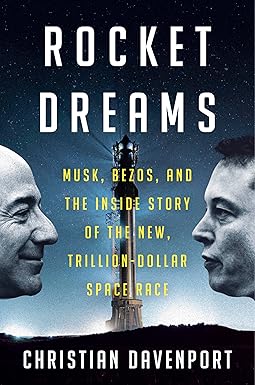Centauri Dreams
Imagining and Planning Interstellar Exploration
Big Sails, Challenging Dreams
I’ve been thinking about solar sails these past few days, a topic that inevitably invokes Arthur Holly Compton, who first demonstrated that x-rays have particle-like properties. Compton’s experiments in 1923 produced a body of work for which he would receive the Nobel Prize in Physics later that decade. Thanks to him we learned that while photons have no mass, they do have momentum, a useful fact for space exploration in that momentum can be transferred to a thin reflective sail, like the Japanese IKAROS that was successfully launched and tested in space in 2010. No question that the force is tiny — a sail would have to be a square mile in area to feel just five pounds of force at the Earth’s distance from the Sun.
The beauty of the sail, of course, is that it can keep producing thrust as long as it’s in sunlight. But how to increase the thrust? In an essay in his new book Going Interstellar (edited with Jack McDevitt and just out from Baen), Les Johnson notes that if we wanted to equal the thrust produced by one Space Shuttle engine, we would need a sail of one hundred thousand square miles in area, which works out to the surface area of Alabama and Mississippi combined. Working at Marshall Space Flight Center in Huntsville, Johnson knows the terrain of which he speaks. He also knows that we’re not about to start producing solar sails of this magnitude any time soon.
The alternative is to take advantage of the inverse square law, which says that moving the sail twice as far from its light source will result in its receiving four times less illumination. A similar move to four times the distance drops the illumination to one-sixteenth of its former value. The flip side of this is that reducing the distance to one-half its former value results in four times the force, and so on. You can see where this is heading: Johnson is building us up for a close solar pass, what sail experts Gregory and James Benford call a ‘Sundiver’ maneuver. Get your sail to swing close enough to the Sun and you get quite a push.
It’s interesting to speculate on just how big that push could be. Here we can take advantage of Gregory Matloff and Roman Kezerashvili (New York City College of Technology, CUNY), who have been massaging the numbers on a sail one mile in diameter moving to within nine million miles of the Sun. They find that a sail of this class could achieve a Solar System exit velocity of 250 miles per second. Johnson talks about all this in miles per second but let’s switch to kilometers, which is my normal practice here. 250 miles per second works out to about 400 kilometers per second, which we can usefully compare to Voyager 1’s 17 km/sec, as Johnson does:
A craft traveling this fast would pass the Earth in four days, Jupiter in twenty-one days and reach the Alpha Centauri system in just over three thousand years. By comparison, the fastest rocket we’ve ever sent into space won’t cover the distance to the Alpha Centauri system for another seventy-four thousand years! By increasing the sail size and keeping the payload mass the same, we can see an engineering path to building a sail that could cover this immense distance in about a thousand years. For you and me, there isn’t much difference between a thousand years and seventy-four thousand years. But in the lifetime of civilizations, the difference between these numbers is significant.
The difference is history. Go back 74,000 years and you are in the realm of archaeology, looking for the remains of nomadic, pre-literate cultures. Go back a thousand years and you are dealing with recorded human history. Ralph McNutt, who is doing such splendid work on interstellar concepts with the Innovative Interstellar Explorer design, once in a NIAC study worked out a trajectory involving a close solar pass that would get a payload to Epsilon Eridani in 3500 years, which he noted as the lifetime of the Egyptian empire. A 1400 year mission to Alpha Centauri would get the payload there in a time period as long as some buildings — the Hagia Sophia in Constantinople and the Pantheon in Rome — have been maintained.
And what would happen to the crew in that amount of time? One solution is the ‘generation ship’ that sees the birth and death of numerous generations on its way to the stars. But in a short story Johnson wrote for the same Going Interstellar volume, the author speculates about another method. The crewmembers of the long-haul starship in “Choice” are put into suspended animation, their minds kept active through hundreds of years of virtual reality simulations, just as their bodies are occasionally adjusted and massaged by intelligent machinery.
Thus the experience of the story’s protagonist, Peter Goss:
He, and every member of the crew, had programmed into the computer system their general wishes for the type of virtual reality scenarios they’d wanted to experience during the long voyage. The liquigel and the regular neuromuscular stimulation that went with it had kept their bodies alive and in peak condition while they slept. The VR scenarios had done the same for their minds and right now Goss wished he were one of the crew, blissfully unaware of the impending crisis, living out some extended adventure in a dream-like stupor. But it was a fleeting thought. He’d always preferred reality to the VR sims — that was one of the reasons he’d volunteered for the trip to Epsilon Eridani. Goss had to get away from the existential existence that was slowly creeping across the Earth and sapping the lifeblood out of the people there.
Missions of vast duration pose problems we haven’t even thought of, and the one Johnson dreamed up is a beauty. If, having experienced your choice among thousands of available VR simulations for a thousand years, you realized you were approaching your destination, would you really want the journey to end? After all, being awakened to land on a planet would put you back on your normal biological clock. No more simulations stretching out before you with no end in sight, but rather a far shorter and physically demanding existence creating a colony on what might be a difficult and chancy world. Obviously, I’m not going to give away the ending.
Going Interstellar is an intriguing volume. I’ve only read the two Johnson essays and another by Greg Matloff on antimatter propulsion, but you’ll find the major ideas for getting us to the stars here, though the editors are quick to note that they cover only the propulsion options open to us with known physics. You’ll find no warp drives or hyperspace vehicles in these pages. You will get, in addition to the work of scientists, stories by science fiction writers like Ben Bova, Michael Bishop and Mike Resnick. The combination reminds me of Arthur C. Clarke’s Operation Solar Sail (1990), which took on every aspect of sail traveling through both a fictional and non-fictional perspective.
It’s a good combination when you’re offering up a potpourri of current thinking on the intractable issue of starflight. We’ll be coming back to this book as I get deeper into it.

A Space Telescope on the Cheap

Back in 1997, astronaut John Grunsfeld pulled off one of the great radio gags of all time by calling in to National Public Radio’s ‘Car Talk’ program while orbiting the Earth aboard Atlantis in STS-81. He had called to complain about his vehicle’s performance which, as he told the show’s hosts — known as ‘Click and Clack, the Tappet Brothers’ — was driving him crazy. His troublesome ride would buck and rattle and run loud for four minutes, then get much quieter for another ten, and then the engine would quit. Odd behavior for any vehicle but the Space Shuttle, as Click and Clack eventually realized, and a memorable exploit for Grunsfeld’s second Shuttle mission.
Image: A bumpy ride to orbit — liftoff of STS-81 on January 12, 1997. Credit: NASA.
Grunsfeld is more commonly remembered as a repairman for the Hubble Space Telescope, a task he performed on three subsequent missions without the help of ‘Car Talk.’ Now the astronaut, with over 58 days in space and eight space-walks, is in the news again, this time with a plan that would not only save NASA money on a future mission design but rescue equipment that is otherwise unused. Grunsfeld has presented a plan to use one of two space telescopes the size of Hubble that were originally designed as spy satellites and re-purpose the instrument toward deep space exploration. Its uses in studying dark energy and exoplanets are among the attractions.
An even bigger attraction is that this hardware is sitting in storage waiting for a ride. The indispensable Dennis Overbye has the story in yesterday’s New York Times, where he discusses what Grunsfeld had to say on Monday at a meeting of the National Academy of Sciences in Washington. The telescopes themselves are in a ‘clean room’ in Rochester, NY, the property of ITT Exelis, an aerospace and technology company headquartered in McLean, VA. The National Reconnaissance Office is ready to pass them along. Overbye offers a description:
Dr. Grunsfeld described the telescopes as “bits and pieces” in various stages of assembly, lacking a camera and other accouterments, like solar panels or pointing controls, of a spacecraft. “We can’t say what they were used for,” he said.
A spokeswoman for the National Reconnaissance Office, Loretta Desio, said, “This is not something we’re going to talk about,” adding, “We’re hoping this becomes a NASA story.”
The two telescopes have a 94-inch-diameter primary mirror, just like Hubble, but are shorter in focal length, giving them a wider field of view: “Stubby Hubbles,” in the words of Matt Mountain, director of the Space Telescope Science Institute, adding, “They were clearly designed to look down.”
But astronomers are telling Grunsfeld they can also be used to look up and out. The question of the moment: Could a repurposed telescope like one of those at ITT Exelis be folded into the WFIRST concept? The Wide Field Infrared Survey Telescope, recommended by the National Academy of Sciences in 2010, has been slated for a launch in the mid-2020s, if then, but the $1.5 billion project could be completed sooner and at lower cost — about $250 million lower — if one of the repurposed telescopes were to be used. Overbye points out that the telescope would have twice the diameter as the one being considered for WFIRST, allowing operations in geosynchronous Earth orbit rather than the solar orbit previously anticipated, and offering a faster sky survey as well as more efficient data downloads.
And yes, suitably modified, one of these telescopes could also be used as an exoplanet hunter. Grunsfeld, who is now NASA associate administrator for space science, has worked out the initial details with a team of astronomers, who seem enthusiastic about the prospect of getting WFIRST — or something perhaps even better — into the sky in an earlier time frame. Could we see a mission using a telescope with four times the light-gathering power of the WFIRST concept ready to fly as early as 2020? The opportunity is there even if a new cost estimate is not, but surely the possibility will come in for consideration at the highest levels. Unused equipment sitting in storage is made to order for economic times like these.
Addendum: This story has plenty of layers to it. See, for example, These Are Not the Telescopes NASA Was Looking For, which just appeared on NASA Watch. Also, check this site (thanks Bill Higgins) and find “Implication of New Developments for the Astronomy and Astrophysics Decadal Survey” — Alan Dressler, Observatories of the Carnegie Institute. Also see “New Developments in Astronomy and Astrophysics” — Paul Hertz, Associate Administrator for NASA Science Mission Directorate (SMD), linked off the same page. Finally, Marcia Smith has a good overview of the initial announcement on SpacePolicyOnline.com.

HD 189733b: An Evaporating World?
While we wait for the last transit of Venus of the century, it’s worth remembering how tricky transit studies can be when we push them out to exoplanetary distances. You would think that catching a transit of a planet like Venus, closer to us than the Sun, would be simplicity itself, but the orbital planes of Venus and the Earth are not precisely enough aligned to allow for more than a pair of transits followed by over a century of waiting for the next. I’ve just received a copy of Mark Anderson’s The Day the World Discovered the Sun (Da Capo Press, 2012) and will be writing about 18th Century transit studies and their impact in coming weeks.
The transits Anderson writes about and the expeditions that ranged the globe to study them played a role in helping astronomers understand the dimensions of the Solar System. And you can see that if Venus is a challenge, tracking planets around other stars will push our technology to its limit. Nonetheless, we’re getting quite good at teasing information out of our data, as the planet known as HD 189733b continues to show us. It was just 16 months ago that carbon dioxide and methane were discovered in the planet’s atmosphere. Moreover, the work was done using a 3-meter instrument located at NASA’s Infrared Telescope Facility at Mauna Kea that ranks no higher than 40th among our ground-based instruments.
Sodium had already been found in the atmosphere of HD 189733b, and now comes word that astronomers working at the Hobby-Eberly Telescope at UT Austin’s McDonald Observatory have identified interactions with the parent star that show the planet is slowly dissolving. 63 light years away in the constellation Vulpecula, the planet is losing hydrogen in great streamers that are much hotter than previously thought, an indication that flare activity on the star is interacting with the atmosphere of the planet. Given the proximity of planet to star, that’s not entirely surprising: HD 189733b, a ‘hot Jupiter,’ orbits 10 times closer to its star than Mercury to our Sun.
Probing an exoplanet’s atmosphere is made possible by its transits as seen from Earth, as Seth Redfield (Wesleyan University) explains:
“Each time the planet passes in front of the star, the planet blocks some of the star’s light. If the planet has no atmosphere, it will block the same amount of light at all wavelengths. However, if the planet has an atmosphere, gases in its atmosphere will absorb some additional light.”

Image: The dotted line shows the planet’s orbit around the star HD189733. The planet orbits the star once every 2.2 Earth days, crossing the face of the star well below its equator. The small circles indicate the planet’s location during each of Seth Redfield’s more than 200 Hobby-Eberle Telescope observations over the course of one Earth year. The red circles indicate observations during transit; the rest of the circles denote out-of-transit observations. Credit: S. Redfield/T. Jones/McDonald Obs.
It was Redfield who first identified sodium in HD189733b’s atmosphere using the same instrument, based on observations that compared the spectrum of the light collected during a transit with the light of the star by itself. As huge as this planet is — 20 percent more massive than Jupiter — it blocks only 2.5 percent of the star’s light, along with another 0.3 percent that is accounted for by the planet’s atmosphere. Exoplanetary atmosphere studies using transits are built around the slight differences that are revealed when the planet passes in front of the star. It’s worth reflecting on all this as we wait for tomorrow’s transit of Venus and ponder how far transit studies have taken us since the first scientific expeditions set out to study them.
The paper is Jensen et al., “A Detection of Hα in an Exoplanetary Exosphere,” Astrophysical Journal Vol. 751, No. 2 (2012), p. 86 (abstract / preprint). More in this McDonald Observatory news release.

All Quiet Around Gliese 581
When you’re looking for signs of an extraterrestrial civilization, you can take two basic approaches. Think back to Frank Drake’s initial SETI experiment at Green Bank in 1960, when because of limited resources and time he chose specific targets: Epsilon Eridani and Tau Ceti. The choice made sense at the time because both were nearby stars and SETI, fresh off the classic paper “Searching for Interstellar Communications” by Philip Morrison and Giuseppe Cocconi, was just beginning to define a methodology. Drake studied his targets near the 1.420 GHz frequency — the 21 centimeter hydrogen line — that the authors had suggested.
Of course, sky surveys are also possible, of which SETI@home may be the most widely known. Here the idea is to make no assumptions whatever about the location of a SETI signal and observe the entire sky. SERENDIP (Search for Extraterrestrial Radio Emissions from Nearby Developed Intelligent Populations) is an attempt, for example, to analyze radio telescope data obtained while astronomers are using the telescope for other purposes. The SERENDIP V.v spectrometer installed at Arecibo in 2009 is the most recently deployed instrument involved in this strategy.
The Closest Habitable World?
We’ve been considering the possibilities growing out of the Square Kilometer Array for SETI purposes, prompting a number of readers, Adam Crowl being the first, to send along a new paper on using Very Long Baseline Interferometry in a targeted SETI search. Hayden Rampadarath and colleagues at the International Centre for Radio Astronomy Research (Perth, Australia) intend the paper to be a foundational document for the use of VLBI in future SETI projects including those at the SKA. The results show great promise for the technique.
With VLBI, combining signals from multiple telescopes allows us to emulate a single instrument the size of the maximum separation between the telescopes, which could be hundreds to thousands of kilometers. Interestingly, there has been little application of VLBI techniques in SETI, although the SETI-Italia project using the VLBI Medicina telescope is active and the SETI Institute has been studying interferometric techniques at frequencies between 1200 and 1750 MHz. What Rampadarath and colleagues have done is to target the widely studied red dwarf Gliese 581, using observations at 1230-1544 MHz made with the Australian Long Baseline Array, which includes three radio telescopes spaced widely in New South Wales.

Image: The Mt. Pleasant radio telescope. southernmost dish used in Australia’s Long Baseline Array. Credit: Wikimedia Commons.
It’s a good choice of target because Gliese 581 is a multi-planet system with at least one planet that looks to be on the edge of the habitable zone. With Kepler’s investigations of thousands of planetary candidates ongoing, we’re beginning to pick out high-value targets like this, defined as planets where liquid water could exist on the surface and life might arise. Gl 581 is not one of the Kepler worlds, but it does present us in the form of Gl581d with a super-Earth with an orbital period of 83 days that according to at least one recent study may offer habitable conditions. The existence of another possible habitable zone planet, Gl581g, now appears unlikely.
VLBI and Its Benefits
The Perth team observed Gl581 for eight hours using the stations of the Long Baseline Array. The result: 200 narrow-band and 22 broadband candidate signals were examined, most or all of which are thought to have been caused by Australian space to Earth geostationary satellites. No evidence for signals from the region of Gl581 emerges. The result is hardly a surprise, but the good news is that this pilot study demonstrates that Very Long Baseline Interferometry makes what the authors call ‘an ideal technique for targeted SETI.’ It also shows us how to proceed:
Since this was a proof-of-concept observation, two differences between this experiment and a typical VLBI observation should be noted. Firstly the baseline lengths in this experiment were short by VLBI standards. Baselines one or even two orders of magnitude longer would significantly reduce the amount of correlated RFI [radio frequency interference].
That’s helpful indeed. Affecting this study were the Australian Optus’ Mobilesat and the INMARSAT geostationary satellite systems, which operate in a range between 1525-1559 MHz, a close match with the candidate signals detected in the observation run. Longer baselines should reduce such problems because they widen the distance between the source of interference and different parts of the array. But there’s more:
Secondly, most VLBI observations are carried out using more than three telescopes. Increasing the number of baselines to four or more constrains both the phase and amplitude closure relations, drastically increasing the quality of calibration. This would also provide the opportunity for image plane searching. However, it would likely be computationally expensive as a technique for searching over very wide frequency ranges. Relaxing the single baseline five times median limit could enhance the sensitivity beyond that of the weakest baseline.
VLBI allows us to search for SETI signals over a wide range of frequencies and with high sensitivity. But there’s also this: The VLBI technology is moving from older data recording systems to real-time network connections, which means these techniques will become available for quick follow-ups on transient radio sources. Thus the detection of a possible SETI signal with VLBI techniques becomes possible. Gliese 581 thus stands in relation to VLBI techniques the same way Epsilon Eridani and Tau Ceti stood to early radio SETI, an initial target that began a series of systematic experiments that the Square Kilometer Array will continue.
What we can conclusively say about Gl581 at this point is that, during the time of observation, no powerful radio signals were beamed at us. I like what co-author Steven Tingay (Curtin University) told ABC Science in a recent story: “We would have seen a signal brighter than 7 megawatts per hertz, but that is a pretty strong signal. Who knows, maybe it was a public holiday on that planet or something and we missed out.” Hope reigns eternal…
The paper is Rampadarath et al., “The First Very Long Baseline Interferometric SETI Experiment,” accepted for publication in The Astronomical Journal (preprint).

Is Our Civilization Detectable?
I haven’t even finished the first line of this post and I’m already in a digressive mood. The mental sidetrack comes from yesterday’s talk about the Square Kilometer Array, whose primary installations are now to be built in both South Africa and Australia. By observing an object through many instruments simultaneously, astronomers can use the technique called interferometry to combine incoming data and emulate a much larger instrument. The SKA’s sensitivity promises to be high enough to allow the detection of possible leakage radiation from another civilization, which prompted me to recall a quote I had buried in my archives:
“I know perfectly well that at this moment the whole universe is listening to us — and that every word we say echoes to the remotest star.”

The words are those of Jean Giraudoux, a French writer and diplomat whose plays, written between the two world wars, gained him an international audience (Christopher Fry was among the admirers who adapted Giraudoux’s work into English). Here the play is The Madwoman of Chaillot, a dizzying fantasy about corrupt business people who are trying to dig up Paris to retrieve its supposed oil reserves, and Countess Aurelia, the eccentric who with the help of an oddball ensemble of misfits puts these ‘wreckers of the world’s joy’ on trial. Giraudoux wrote the play in 1943 during the German occupation and died before he could see it performed.
Among the many plays, novels and essays the prolific Giraudoux wrote, this one eventually caught the eye of Carl Sagan, who used it to introduce a chapter about radio SETI in Intelligent Life in the Universe, the 1966 title he produced in collaboration with the Russian astronomer I.S. Shklovskii. I always enjoy paging through this book to see how our ideas of astrobiology and SETI have changed over the years. The SKA story invariably reminded me of Sagan’s concern over our own leakage radiation to the stars — he imagined the radio voice of Enrico Caruso traveling outward forever at the speed of light:
By now, the signal has propagated some 40 light years into space. If there is an advanced technical civilization within 20 light years of the Sun, they may have received that signal 20 years ago, correctly interpreted it as the result of another technical civilization, and immediately beamed their response to us. We should receive that signal any day now. But if the nearest technical civilization is many hundreds of light years away, we will have to wait a little longer.
And I have to add this entertaining riff, evidence that Sagan occasionally needed to lighten up:
…the characteristic signs of life on Earth which may be detectable over interstellar distances include the baleful contents of many American television programs and the mindless outpourings of rock-and-roll stations. It is a sobering thought indeed that the Beverly Hillbillies may be our only interstellar emissaries.
I’m not sure who it was who added Chuck Berry to the Voyager Golden Record, but whoever it was, good for him/her.
Whispers in the Night
People sometimes assume that stray signals would be easily snared at interstellar distances, but we’re learning that it would take a mammoth installation to make such a catch. The film Contact, made from Sagan’s novel of the same name, uses the wonderful device of a broadcast returned to us, a transmission from the 1936 Olympics in Berlin. Receiving such a signal parroted back to us would surely flag the detection of an extraterrestrial civilization and cause researchers to begin the necessary work to look for embedded information inside it.
The people behind the Square Kilometer Array talk about the ability of this instrument, once its vast telescopic resources are in place and connected to powerful computing facilities, to pick up something as weak as the extraterrestrial equivalent of an airport radar around another star. It’s a fantastic prospect, implying our ability to add a new layer to our existing SETI investigations. Is it possible that instead of scanning the skies for beacons, we might simply begin to pick up the extraneous signals of a civilization going about its daily life? The goal is energizing, but hearing claims about extraterrestrial detections always makes me uneasy.

Image: Signals from our civilization are gradually working their way into the galaxy. But would a conventional radio telescope be able to detect them at our present level of technology? Would the SKA?
Back in late 2010, James Benford discussed leakage radiation at a meeting of the Royal Society in Britain, asking whether the kind of installations we currently have on Earth could detect signals this weak if sent from a nearby star. It turns out a typical radio telescope like the Parkes instrument in Australia, if located near Alpha Centauri, would not be able to detect our TV transmissions at all. Benford pointed out that signal information is transmitted in bands on each side of the central frequency and that broadcast antennae aim their transmitted power mostly toward the surface. Signals that get into space are not coherent and are unlikely to be noted.
Sizing up the SKA
We’ll learn much more about the Square Kilometer Array as its various components come online in the late years of this decade and beyond, but the paper presenting Benford’s analysis, written with John Billingham (SETI Institute), indicates that talk about picking up airport radars and other leakage radiation may be overly optimistic. From the Benford/Billingham paper:
The assertion of Loeb and Zaldarriaga (2006) that SKA can see leakage radiation at 100 pc (316 ly) is based on the assumption that the sources are continuous, so long integration times make the leakage detectable. However, this is not true of Earth leakage. Integrating over days to months doesn’t work when the TV station you’re observing is transmitting in your direction for a time typically ~hour, before it disappears around the limb of the Earth, as stated by Sullivan. Forgan and Nichol (2010) show that, even if Loeb and Zaldarriaga were right, the probability of detection is very low.
The SKA may be too small for the task of picking up leakage radiation after all. Back in 2010, Seth Shostak (SETI Institute) wrote an essay about the matter in the Huffington Post:
Evidence of our existence has already washed over about 15,000 star systems, as the FM, television, and radar signals that were first transmitted during the late 1930s wick into space.
That isn’t news to many, of course, but maybe this is: These signals are not hard to find. If there are any aliens within a few hundred light-years, these clues to our existence could be found with an antenna the size of Chicago. For any society able to threaten us across such distances, that’s a pretty easy construction project.
Shostak was writing in the context of Stephen Hawking’s concerns about the dangers of extraterrestrial contact, and he’s doubtless right that a society advanced enough to cross the interstellar gulf to threaten the Earth would find building a Chicago-sized antenna feasible. But in our own terms (and what I’m getting at in this post is what we can detect), such an antenna would blow the budget for the entire century, being far larger than what the Square Kilometer Array can provide. Benford and Billingham went to work on the cost issues involved, assuming that Shostak was right that it would take an antenna this large:
Certainly, with ever-larger antenna area, at ever greater cost, advanced ETI can detect us. From the above analysis, we calculate that at 50-ly range, the antenna area must be ~1 km2. To assess Shostak’s claim, note that Chicago’s area is 24,800 km2 = 2.48 1010 m2. At the present value of SKA antennas, 2.4 k$/m2, the cost is 60 T$, comparable to Earth’s GNP of 70 T$. So if comparable to us, ETI would have to devote their entire science budget for a time perhaps of order a century to build Shostak’s antenna, a sobering prospect.
Sobering indeed. Obviously, a sufficiently advanced civilization would be capable of technologies and budgets that defy our analysis, but Benford and Billingham help us answer the question of whether or not our present technology — or that of the near future — would be capable of detecting our own transmissions from a nearby star. The answer is almost certainly no. Leakage radiation is going to be tough to detect even with country-spanning installations like the SKA. And we might answer Giraudoux’s Madwoman of Chaillot by saying that perhaps every word we say really is echoing to the remotest star, but the civilizations capable of hearing those words are going to be so far beyond our powers as to defy the imagination.
The Benford and Billingham paper is “Costs and Difficulties of Large-Scale ‘Messaging’, and the Need for International Debate on Potential Risks” (abstract) / full text.

Thoughts on the Square Kilometer Array
We now know that the vast collection of radio dishes and antennae that will become the Square Kilometer Array (SKA) will be built on two sites, with the majority of dishes in Phase 1 (beginning in 2016) being constructed in South Africa, and further dishes added in Australia as the project develops. The SKA is to be a radio telescope of unprecedented sensitivity capable of sky surveys at frequencies from 70 MHz to 10 GHz. A SKA news release notes that “All the dishes and the mid-frequency aperture arrays for Phase II of the SKA will be built in Southern Africa while the low-frequency aperture array antennas for Phase I and II will be built in Australia.”
Combining the signals from the project’s dishes, mid-frequency aperture arrays and low-frequency aperture arrays will offer a telescope with a collecting area equivalent to a dish with an area of one square kilometer, a truly formidable observing platform. Phase 1 construction will involve about 10 percent of the array and will involve dishes and low-frequency aperture arrays. Phase II is to begin several years after Phase I is complete, but funding for this part of the project has not been guaranteed.

Image: The proposed Square Kilometre Array (SKA) radio telescope. Credit: AAP.
Astronomy Now‘s Keith Cooper looks at the recent announcement in South Africa and Australia Share SKA Spoils, noting that both the MeerKAT (Karoo Radio Telescope, in South Africa) and ASKAP (Australian SKA Pathfinder) precursor telescopes have already been built, prompting the advisory committee to choose inclusivity as the best option. The idea is to maximize existing investments in both countries, but I’m still surprised by the result. From Cooper’s article:
What makes their decision slightly controversial is that the organisation’s own Site Advisory Committee had ruled that while both bids were excellent, South Africa had the edge overall after considering criteria such as levels of radio interference and long term sustainability of a radio quiet zone, the physical characteristics of the site, long distance data network connectivity, operating and infrastructure costs as well as the political and working environment.
And from an article in South Africa’s Times Live:
The eagerly awaited decision now means that engineers can connect antennas at Australia’s core site at Mileura station, about 100 kilometres (60 miles) west of Meekathara in western Australia. Other antennae are distributed across Australia and New Zealand.
South Africa’s site in the arid Karoo region will now also be connected by a remote link to a network of dishes stretching across southern and eastern Africa and as far away as Ghana.
What the SKA Can Do
The SKA is one of the primary global science projects of the early 21st Century, with a charter to study the earliest eras of the universe, between the epoch of recombination, when charged electrons and protons first became bound (from which came the Cosmic Microwave Background we can study today) and the emergence of the first galaxies. But its proposed areas of investigation range widely, from the large-scale structure of the universe as affected by dark energy to the workings of pulsars and black holes. For our purposes on Centauri Dreams, it’s useful to focus on the role the SKA has to play in exoplanet studies, while its potential in the area of SETI is impossible to ignore.
Combining signals from widely separated antennae allows us to achieve high resolution at radio wavelengths, making the SKA a potent tool for investigating the habitable zones of Sun-like stars in their infancy. The developing array will be able to image the thermal emission from dust in the habitable zone and chart the flow of the small particles that eventually go into making planets. Imaging features in protoplanetary disks will help us track the formation of giant planets as they open up gaps in the dust, and should offer a look at both the core accretion model of planet formation — the slow growth of dust grains into rocks and planetesimals — and the gravitational instability model, in which planets grow out of disruptions in the surrounding disk.
As for what other kinds of signals the SKA might detect, the project’s planners seem most enthusiastic about SETI. The SKA website claims that its vast network will be sensitive enough to detect an airport radar on a planet 50 light years away. Indeed, a fully fleshed out SKA should be sufficiently sensitive to detect signals comparable to our own television transmitters operating on planets around the stars closest to the Sun. While traditional SETI has proceeded largely through a search for directed beacons, the SKA will allow a search for leakage radiation from nearby stars, while expanding the range of our search for beacons by a factor of 1000.
Given our own brief window of visibility at television wavelengths as we increasingly go to cable and satellite technologies, the prospect of detecting an alien television signal from the handful of stars near enough to make it possible is inconceivably remote. On the other hand, this is the first time we can make a good case that a civilization not much more advanced than our own could indeed pick out signs of intelligent life from all those old Milton Berle broadcasts we’ve sent.
Meanwhile, it’s fascinating to consider other surprises that the SKA might produce. One possibility is the detection of so-called ‘rogue planets’ that wander the interstellar deep without a star. Last year we looked at the work of Heikki Vanhamaki (Finnish Meteorological Institute), whose calculations showed that a gas giant rogue planet with a large moon could produce auroral effects detectable out to a range of 185 light years by an array as formidable as the Square Kilometer Array. Given the number of rogue planets that may be out there (Vanhamaki thinks there could be as many as 2800 within that 185 light year range), detection of at least a few may be a possibility (see Finding an Interstellar Wanderer for more on this work).



